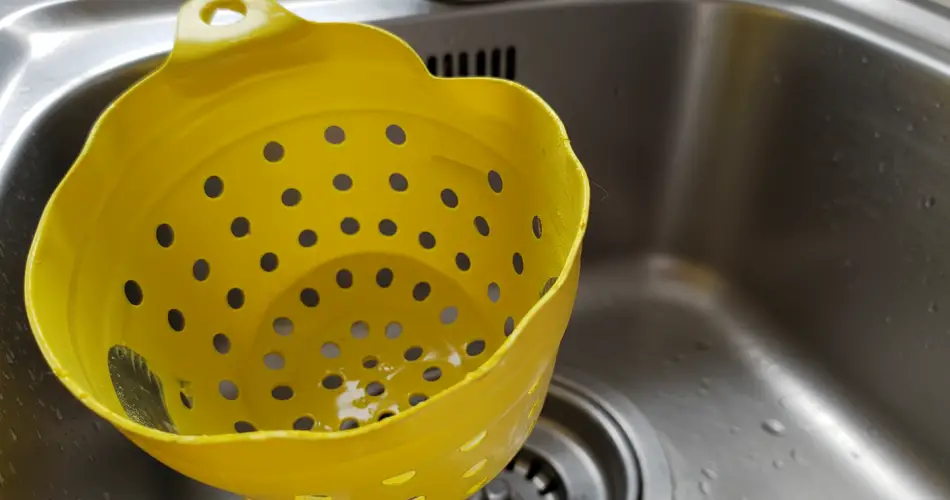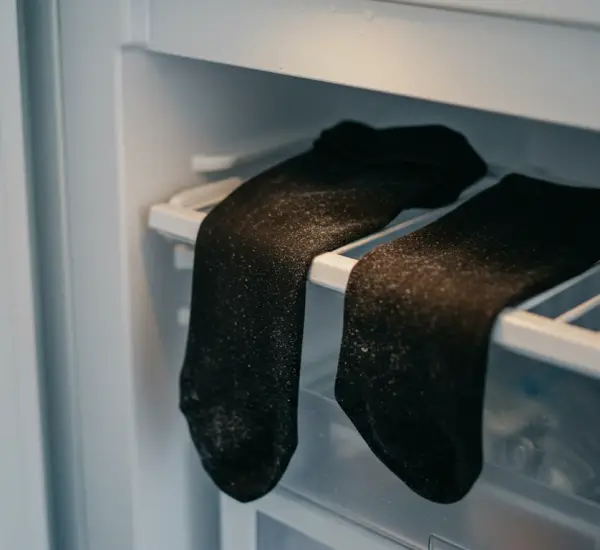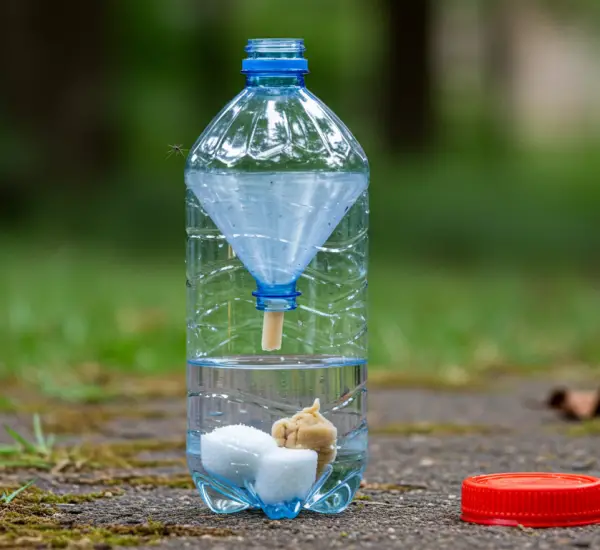Clogged sinks are one of the most frustrating problems in the home, often caused by food scraps, hair, and other debris accumulating in the pipes. While it’s common for many people to dispose of leftovers directly down the drain, this practice can lead to a host of problems, both practical and environmental. Fortunately, there’s a simple and cost-effective solution: a homemade sink filter that can be made for as little as 50 cents. This small investment can save you time, money, and stress in the long run.
Why You Should Never Throw Food Waste Down the Drain
Throwing food scraps into the sink might seem harmless, but it can quickly create a range of issues. One of the main problems is that food particles can accumulate inside pipes, leading to blockages. A clogged sink requires plumbing intervention, which can be expensive and time-consuming. Even small accumulations over time can cause serious clogs, leading to backups and even potential damage to your home’s plumbing system.
Moreover, disposing of food waste down the drain can have negative environmental impacts. If your home is connected to a wastewater treatment system, excessive food waste can interfere with the treatment process, potentially causing contamination of water sources. When food decomposes in landfills or sewage systems, it produces greenhouse gases such as methane, which contribute to climate change.
Food scraps in drains also attract pests like insects and rodents, creating hygiene and health concerns. In addition, people often resort to harsh chemical drain cleaners to fix these problems, but these chemicals can contaminate water systems and harm both human health and the environment. Unpleasant odors are another common issue, especially if the sink drain is near areas where you spend a lot of time. These smells are not just annoying—they can indicate bacterial growth that might pose health risks.
In short, preventing debris from entering your pipes is essential for both maintaining a clean, functional kitchen and protecting the environment.
A Simple, Affordable Solution: The DIY Sink Filter
Rather than spending money on expensive commercial filters, you can create a functional sink filter for just 50 cents using basic materials and a few simple tools. This DIY filter will trap hair, food scraps, and other debris before they enter the pipes, effectively preventing clogs.
Materials You’ll Need:
-
A rigid plastic tube (available at hardware stores)
-
Plastic pipe glue
-
A drill with small bits
-
A saw
-
A screwdriver or punch tool
Step-by-Step Instructions
-
Measure and Cut the Tube: Start by measuring the length of tube needed to fit inside your sink drain. Mark the cutting point clearly, then use a saw to cut the tube to the correct length.
-
Apply Plastic Glue: Spread a thin layer of plastic pipe glue on both ends of the tube. Insert the glued ends into the sink drain, ensuring a secure fit. Allow the glue to dry according to the manufacturer’s instructions.
-
Drill Holes at the Top: Using a drill, create small holes in the top section of the tube. These holes will allow water to pass through while trapping larger debris such as hair or food particles. Ensure the holes are small enough to prevent debris from slipping through.
-
Create Bottom Drainage Holes: Next, make slightly larger holes on the lower section of the tube to allow filtered water to exit freely. These holes should be balanced—large enough for water flow, but small enough to retain trapped debris inside the tube.
-
Install and Test: Insert the tube into the sink drain, ensuring it sits firmly in place. Run water through the sink to test the filter’s effectiveness. If necessary, adjust the position of the tube or enlarge holes slightly to optimize water flow.
-
Regular Cleaning: To maintain proper function, clean the filter regularly. Remove accumulated debris using a small brush or by rinsing the tube under running water. Frequent cleaning ensures that the filter continues to prevent clogs and keeps your sink functioning smoothly.
Benefits of a DIY Sink Filter
This inexpensive homemade filter provides numerous advantages:
-
Cost-Effective: With just 50 cents and a few basic materials, you can create a durable filter that prevents expensive plumbing repairs.
-
Environmentally Friendly: By catching food scraps before they reach the pipes, you reduce the need for chemical drain cleaners, which can harm the environment.
-
Health and Hygiene: The filter prevents the buildup of bacteria and unpleasant odors in your sink drain.
-
Prevents Clogs: By stopping hair, food particles, and other debris, the filter dramatically reduces the risk of plumbing blockages.
Additional Tips
-
Choose the Right Material: Ensure the plastic tube you use is sturdy enough to withstand water pressure and frequent cleaning.
-
Positioning Matters: The tube should sit snugly inside the drain to prevent debris from bypassing the filter.
-
Periodic Maintenance: Even a small filter can become clogged over time, so cleaning it weekly or bi-weekly is recommended.
-
DIY Adjustments: If your sink is larger or differently shaped, you can modify the tube length or hole size to optimize the filter’s performance.
Conclusion
Preventing clogs in your sink doesn’t have to be complicated or expensive. With just 50 cents, a few basic tools, and some household know-how, you can create a simple yet effective sink filter. This small investment protects your plumbing, reduces environmental impact, and keeps your kitchen clean and odor-free.
By taking a proactive approach and installing a DIY filter, you save yourself from the frustration of clogged drains, costly plumber visits, and chemical cleaners. Not only does this method work effectively, but it also encourages a more sustainable and hygienic kitchen routine.
Next time you use your sink, consider this inexpensive and ingenious solution—it’s a small effort that brings big results.



